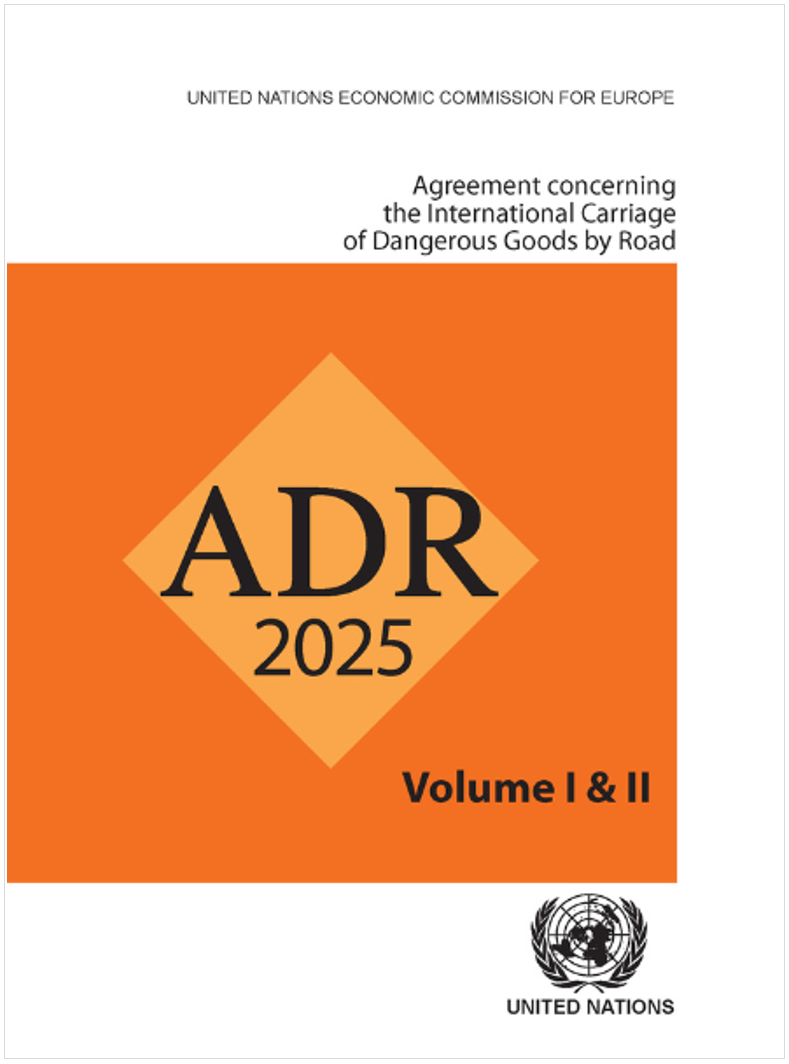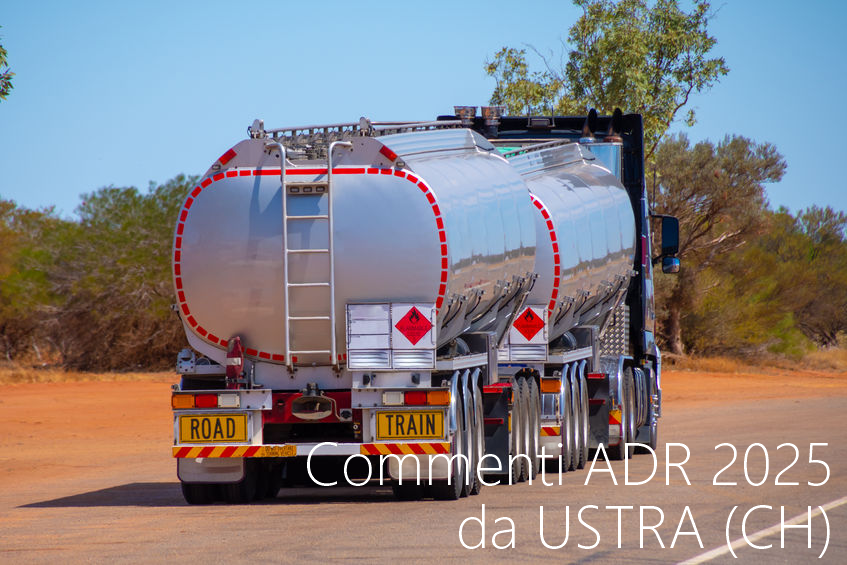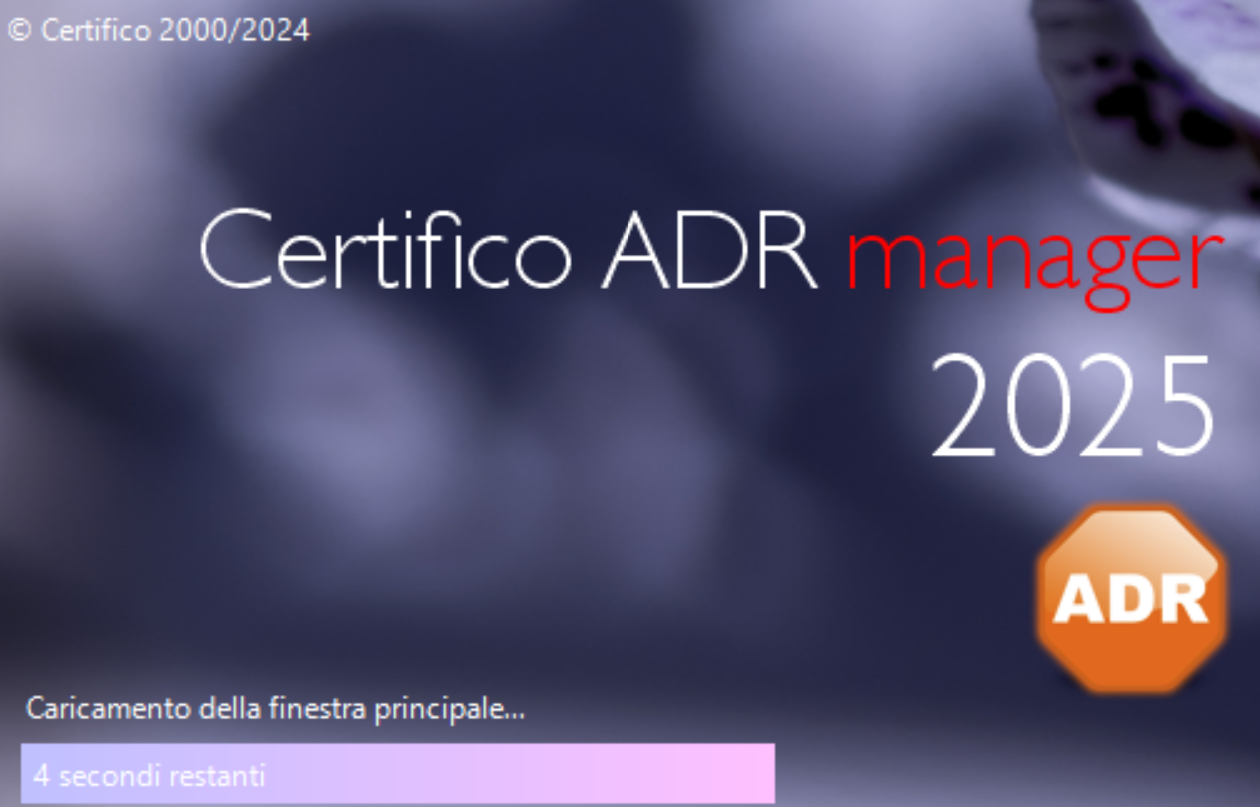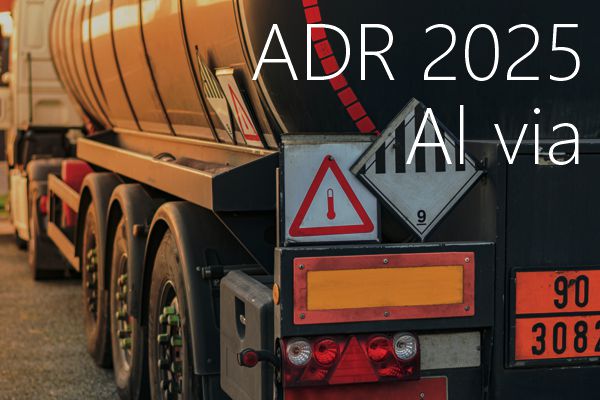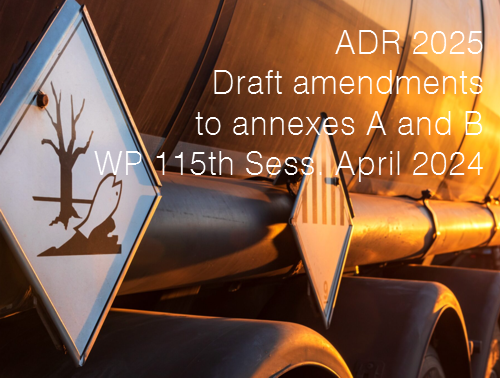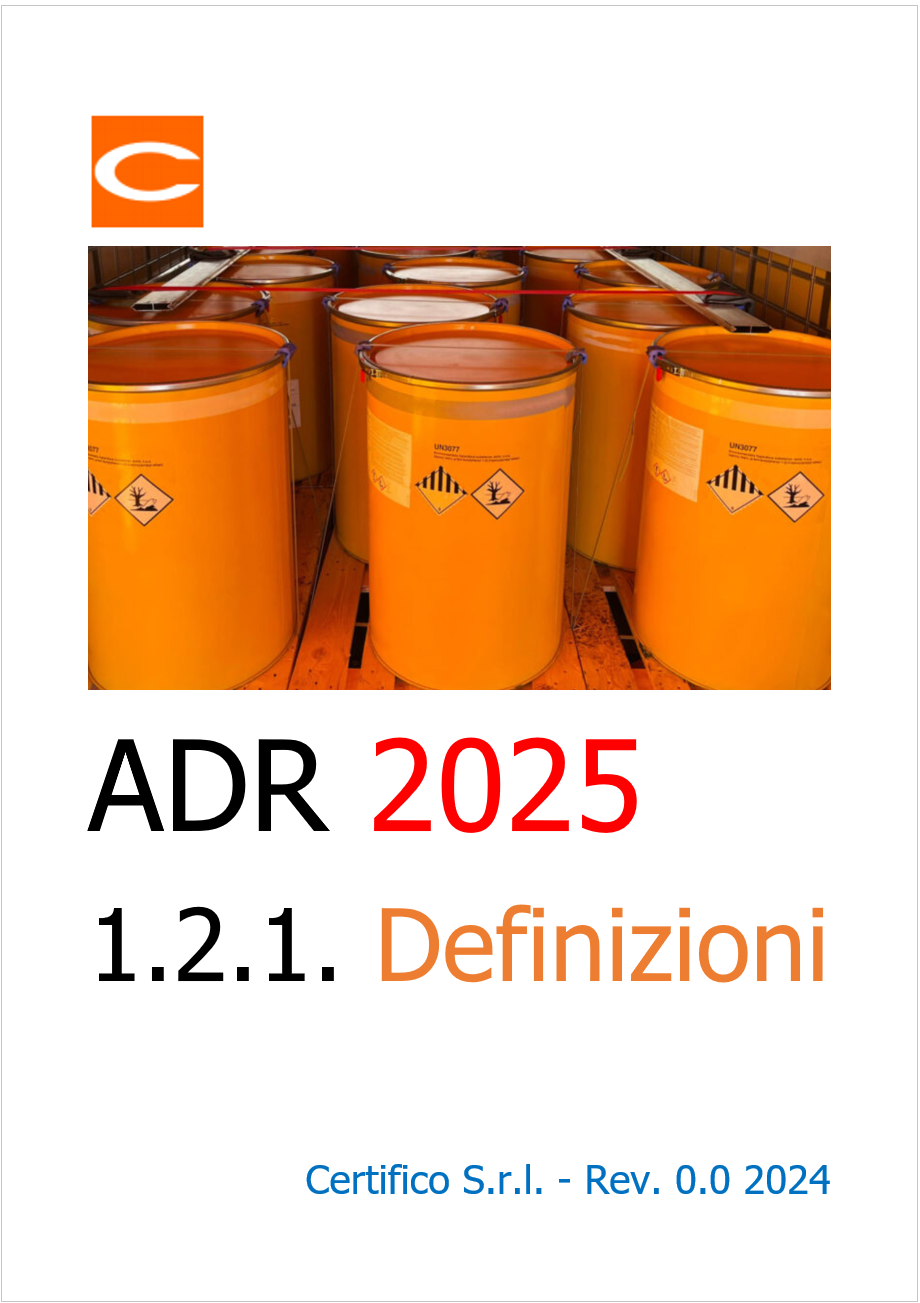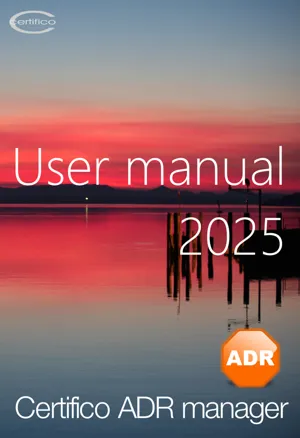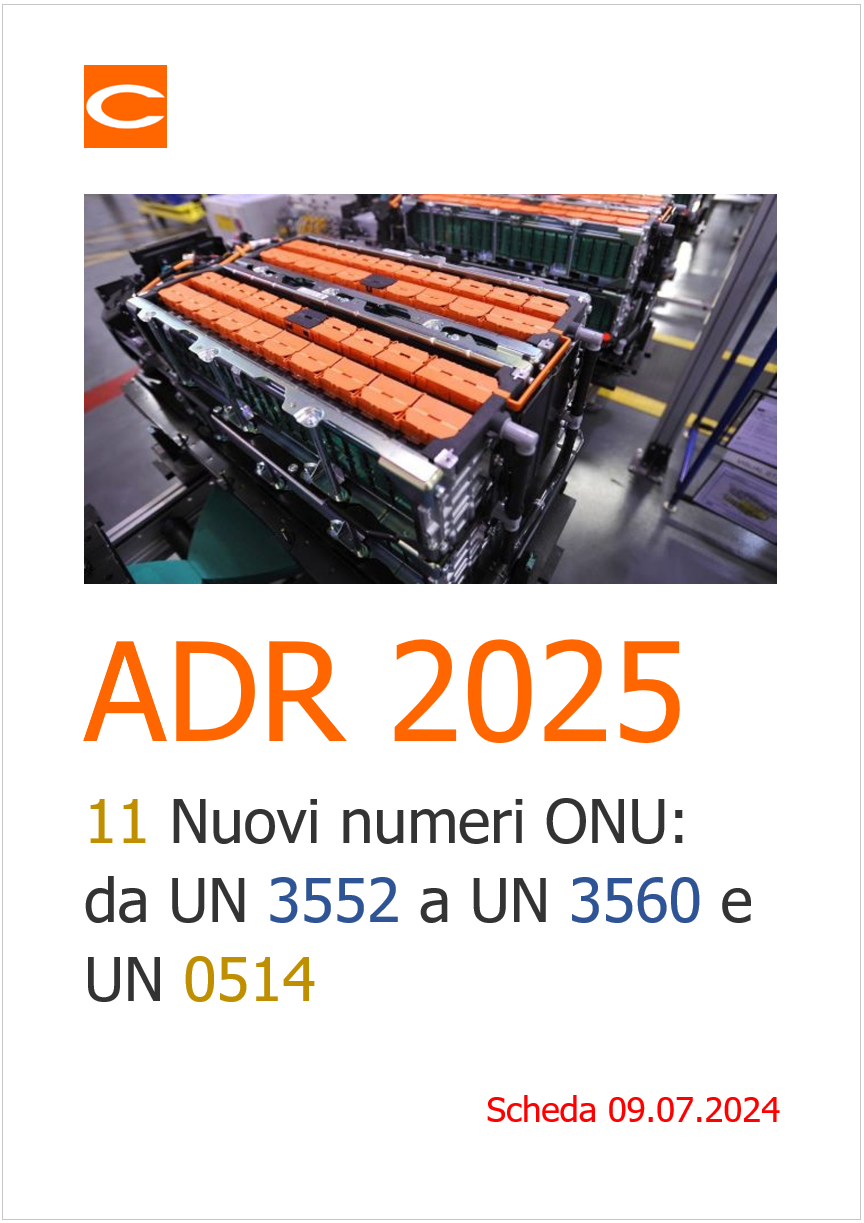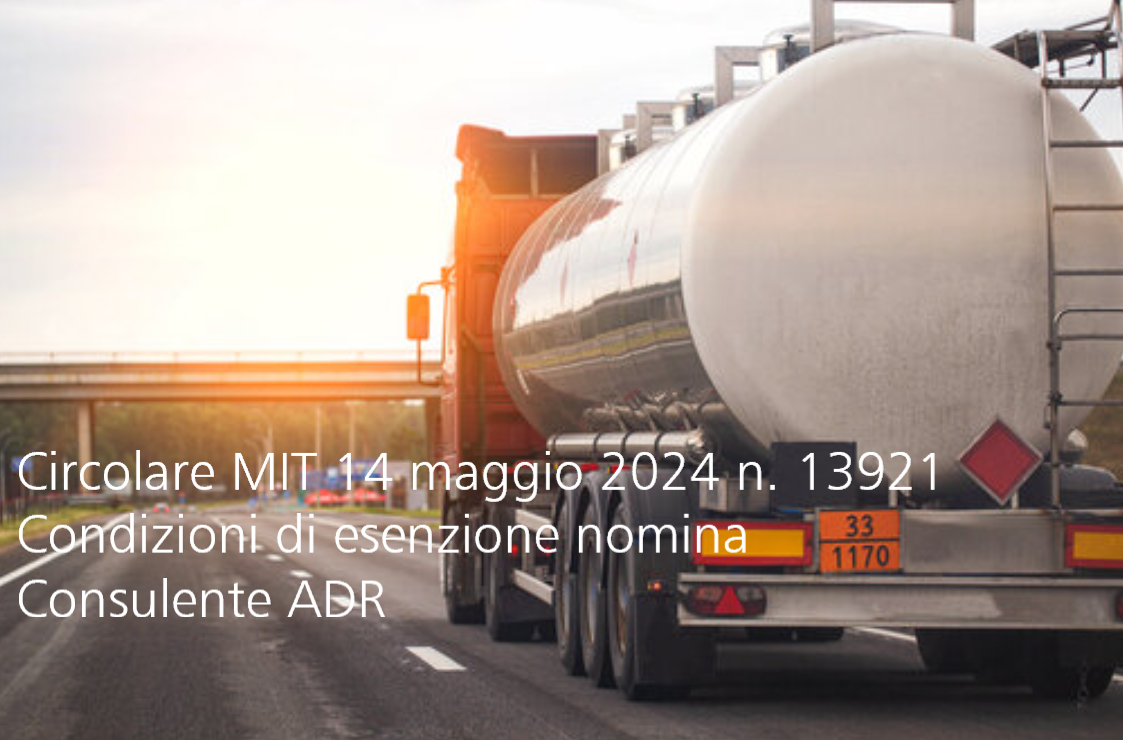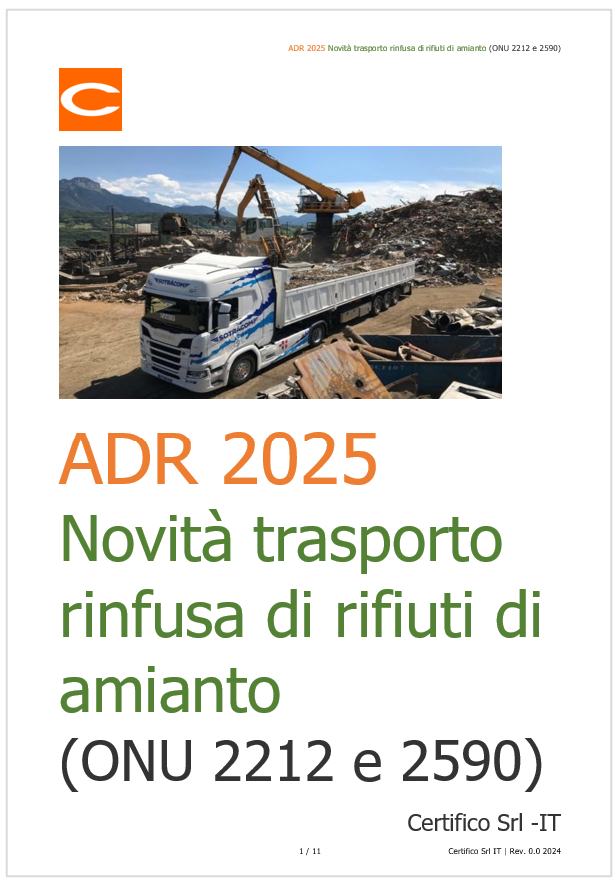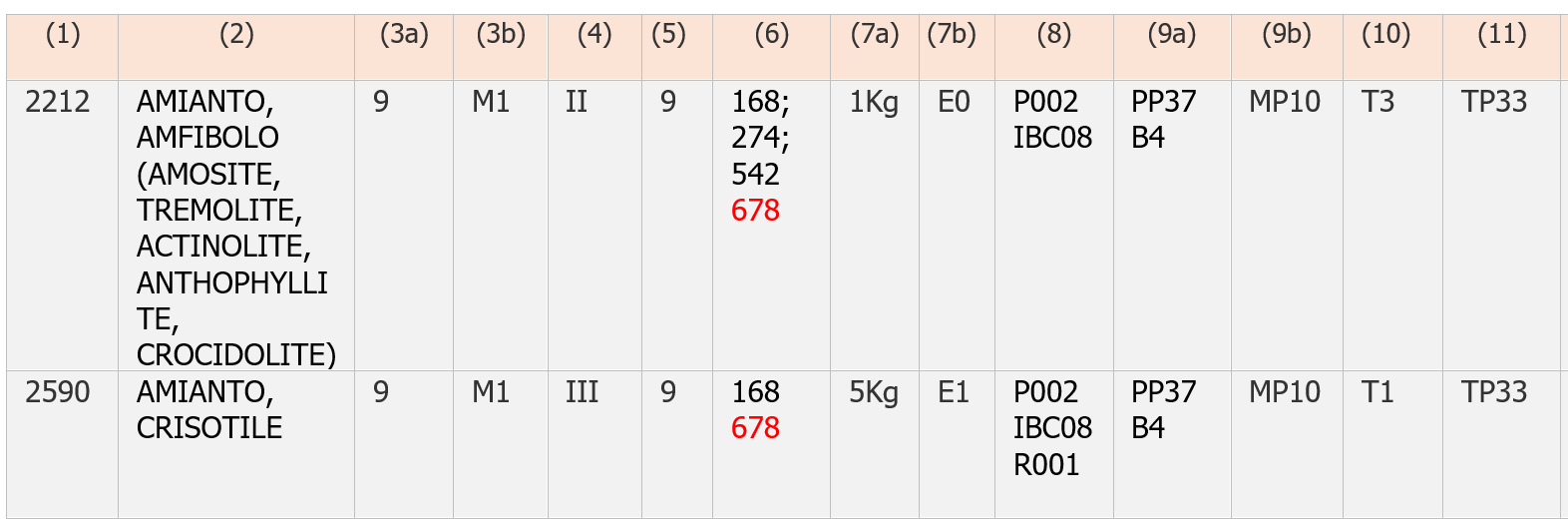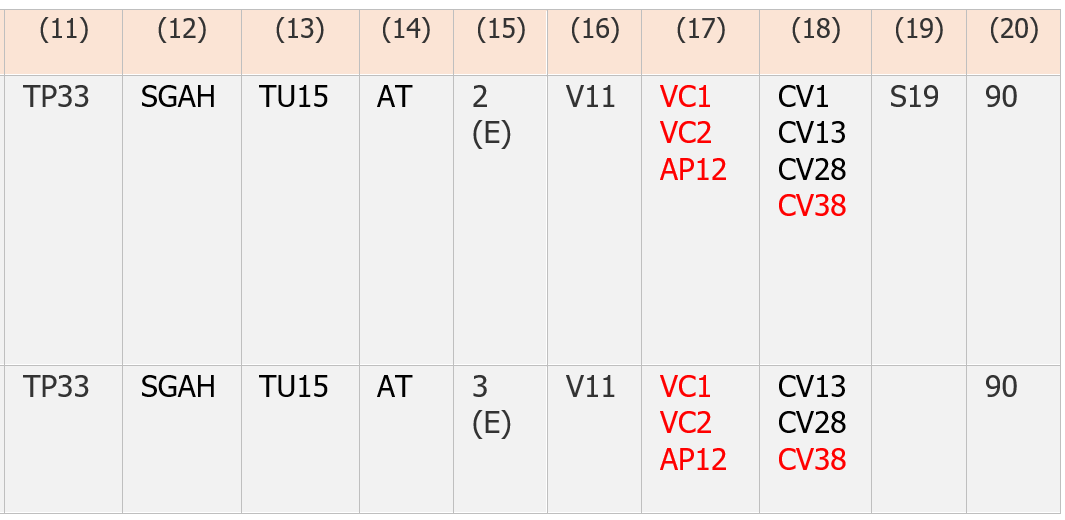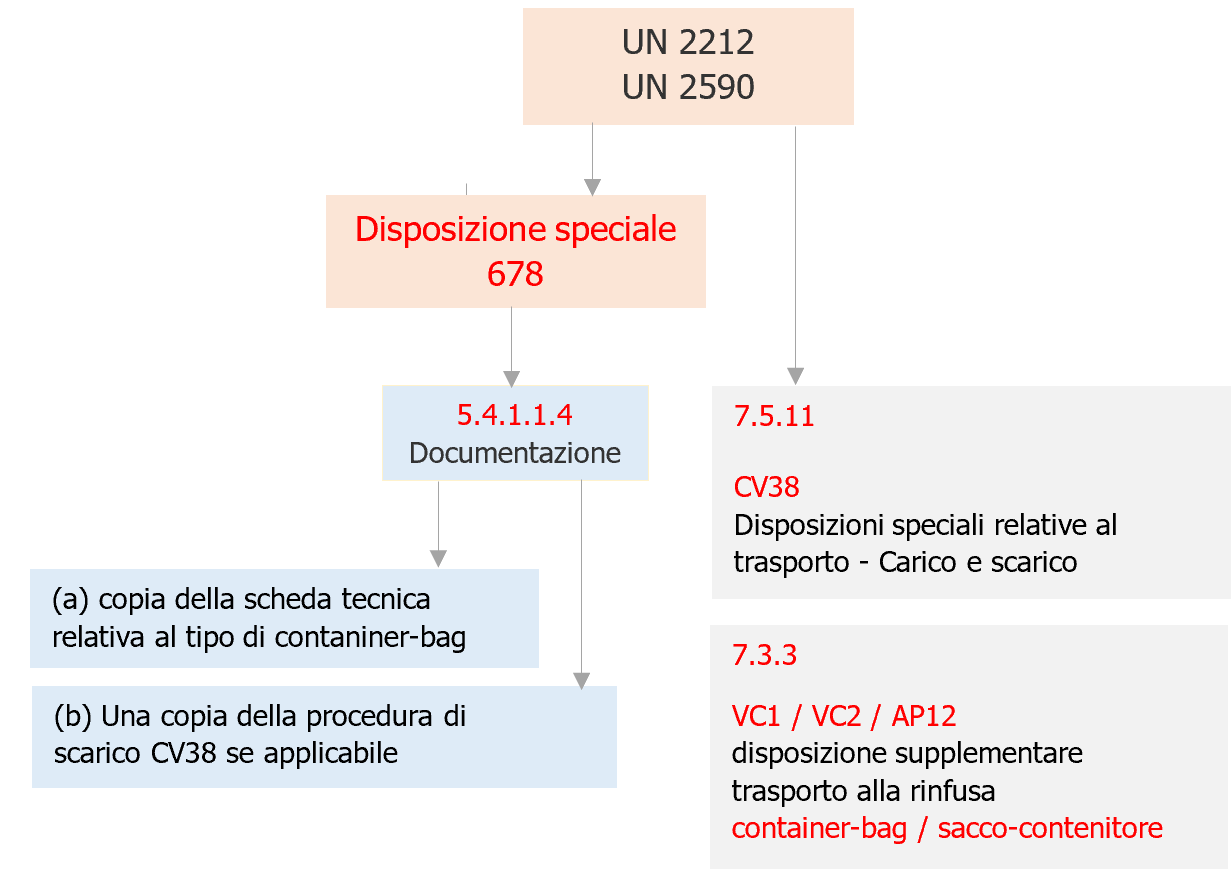Il Capitolo 1.2 dell’ADR è relativo alle definizioni, unità di misura e abbreviazioni. Di seguito estratto sezione 1.2.1. “Definizioni” ADR 2025.
M
Manuale delle prove e dei criteri l’ottava edizione revisionata del “Manuale delle prove e dei criteri” pubblicato dall’organizzazione delle Nazioni Unite (ST/SG/AC.10/11/Rev.8);
[°] Manutenzione ordinaria di un GIR flessibile, l'esecuzione di operazioni ordinarie su di un GIR flessibile in materiale plastico o in materiale tessile, quali:
a) pulizia; o
b) sostituzione di elementi non facenti parte integrante del GIR, quali rivestimenti e chiusure, con elementi conformi alle specifiche d'origine del fabbricante;
a condizione che queste operazioni non compromettano la funzione di contenimento del GIR flessibile né la sua conformità al prototipo;
[°] Manutenzione ordinaria di un GIR rigido, l'esecuzione di operazioni ordinarie su di un GIR metallico, un GIR in plastica rigida o un GIR composito, quali:
a) pulizia;
b) rimozione, reistallazione o sostituzione delle chiusure sui corpi (comprese le relative guarnizioni), o dell'equipaggiamento di servizio, in conformità alle specifiche originali del fabbricante, a condizione che sia verificata la tenuta del GIR; o
c) il ripristino dell'equipaggiamento di struttura non avente direttamente una funzione di contenimento di una merce pericolosa o di mantenimento di una pressione di svuotamento, in modo tale che il GIR sia nuovamente conforme al prototipo approvato (riparazione delle maniglie o degli attacchi di sollevamento, ad esempio), a condizione che la funzione di contenimento del GIR non sia compromessa;
Massa di un collo, salvo indicazione contraria, la massa lorda del collo. La massa dei contenitori e delle cisterne utilizzati per il trasporto delle merci non è compresa nelle masse lorde;
Massa lorda massima ammissibile:
a) (per i GIR), la somma della massa del GIR e di tutto l'equipaggiamento di servizio o di struttura e della massa netta massima;
b) (per le cisterne), la tara della cisterna e il carico massimo autorizzato per il trasporto;
NOTA: Per le cisterne mobili, cfr. capitolo 6.7.
Massa netta di materie esplosive, la massa totale delle materie esplosive, senza imballaggi, rivestimenti, ecc. (I termini "quantità netta di materie esplosive", "contenuto netto di materie esplosive", "peso netto di materie esplosive" o "massa netta in chilogrammi dei contenuti di materie esplosive" sono spesso utilizzati nello stesso senso);
Massa netta massima, la massa netta massima del contenuto di un imballaggio unico o massa combinata massima degli imballaggi interni e del loro contenuto, espressa in chilogrammi;
Materia animale, carcasse animali, parti di corpi animali o alimenti per animali di origine animale;
Materiale plastico riciclato, il materiale recuperato da imballaggi industriali usati o da altro materiale plastico che è stato preselezionato e preparato per essere trasformato in imballaggi nuovi, compresi gli IBC. Le proprietà specifiche del materiale riciclato utilizzato per la produzione di imballaggi nuovi, compresi gli IBC, devono essere garantite e documentate regolarmente nell’ambito di un programma di garanzia della qualità riconosciuto dall'autorità competente. Il programma di garanzia della qualità deve includere una registrazione della corretta preselezione e verifica che ogni lotto di materiale plastico riciclato, che è di composizione omogenea, sia coerente con le specifiche del materiale (indice di fluidità, densità e resistenza alla trazione) del prototipo fabbricato con tale materiale riciclato. Ciò include necessariamente la conoscenza del materiale plastico da cui deriva la plastica riciclata, nonché la conoscenza del precedente uso del materiale plastico, comprese le precedenti materie contenute, se quel precedente uso potrebbe ridurre la capacità degli imballaggi nuovi, compresi gli IBC, prodotti utilizzando quel materiale. Inoltre, il programma di garanzia della qualità del produttore dell’imballaggio o dell’IBC di cui al punto 6.1.1.4 o 6.5.4.1 deve includere l'esecuzione delle prove meccaniche appropriate sul prototipo di cui al 6.1.5 o 6.5.6 per gli imballaggi o gli IBC, fabbricati da ciascun lotto di materiale plastico riciclato. Durante queste prove, la resistenza all’impilamento può essere verificata mediante un’appropriata prova di compressione dinamica, in luogo della prova statica di messa sotto carico.
NOTA: ISO 16103:2005 “Imballaggio - Imballaggi per il trasporto di merci pericolose - Materiale plastico riciclato”, fornisce indicazioni aggiuntive sulle procedure che posso essere seguite per approvare l'uso di materiale plastico riciclato. Queste linee guida sono state sviluppate sulla base dell'esperienza nella produzione di fusti e taniche da materiale plastico riciclato e come tali potrebbe essere necessario adattarlo ad altri tipi di imballaggi, IBC e imballaggi di grandi dimensioni realizzati in materiale plastico riciclato".
Membro dell'equipaggio, un conducente o qualsiasi altra persona che accompagna il conducente per ragioni di sicurezza, di formazione e di gestione;
Merci pericolose, le materie e oggetti il cui trasporto è vietato secondo l'ADR o autorizzato unicamente alle condizioni ivi previste.
Modello, per il trasporto di materiali radioattivi, la descrizione di un materiale fissile esente in virtù del 2.2.7.2.3.5 f) , di un materiale radioattivo sotto forma speciale, di un materiale radioattivo a bassa dispersione, di un collo o di un imballaggio che permetta una completa identificazione dell'oggetto. La descrizione può includere specifiche, disegni costruttivi, relazioni, che dimostrino la conformità ai requisiti normativi, ed altri documenti pertinenti;
Mezzo di trasporto, per il trasporto su strada o per ferrovia, un veicolo o un vagone;
Motore pila a combustibile, un dispositivo utilizzato per il funzionamento di un equipaggiamento, costituito da una pila a combustibile e la sua fornitura di carburante, integrata con la pila a combustibile o separata, e comprendente tutti gli accessori necessari per adempiere la sua funzione.
